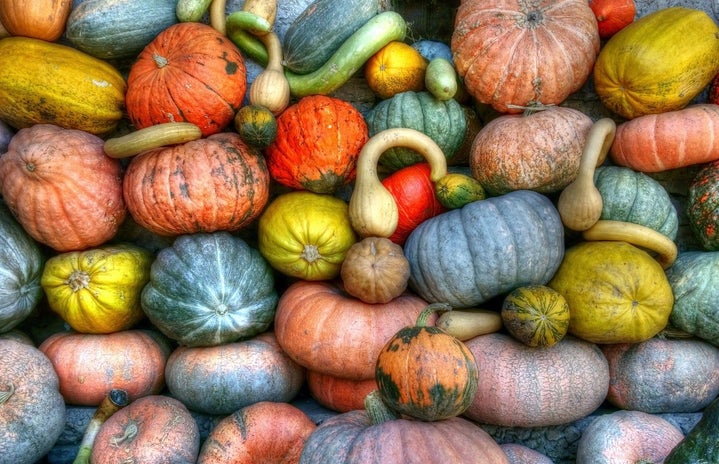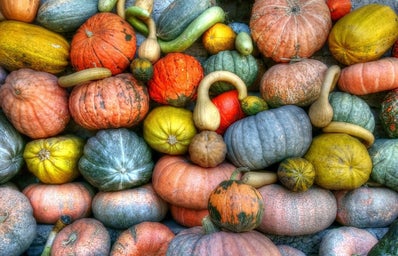Halloween has come and gone. The costumes have been hung up, the decorations have been taken down, the shops have moved on to Christmas, children are getting dangerously close to getting diabetes, and Linus has yet to find the Great Pumpkin. All is well, except for those pumpkins that you have lying around. You’re probably thinking, “What am I going to do with this jack-o-lantern? Do I throw out something that I spent a lot of creative energy into or do I keep it while it rots and decays away?” Here’s a better question; what made the pumpkin associated with Halloween? Technically, pumpkins can be harvested all throughout the Fall season, not just in October. In fact, pumpkin pie is a common dish served during Thanksgiving, almost a whole month after Halloween has passed. So why Halloween?
https://giphy.com/gifs/food52-food52-food-52-5knp3kuvvvnW
Gif via sweetestpotato on giphy.com
This answer goes back to Europe. Celtic culture celebrated an event called Samhain (pronounced saw-win), an event that took place around October and November. The purpose of this event was to celebrate the coming harvest and the “dark half of the year.” Because the celebration stemmed from Pagan beliefs, the Church tried to Christianize the celebration, keeping the rituals and traditions, but now making it a Christian celebration. This resulted in Pope Gregory declaring November 1st as All Saints Day in the ninth century. While this celebration would take place all throughout Europe, it was the people who celebrated it in Ireland who had the most impact today. As part of the celebration of Samhain, people carved turnips out and placed a piece of burning coal inside and called them Jack O’Lanterns. These early Jack O’Lanterns didn’t necessarily resemble the ones we see today; they had no scary faces carved into them because their sole purpose was to literally be a lantern. It was the Irish and the Scottish who started the tradition of carving scary faces on turnips, and later potatoes, on the Jack O’Lanterns and placing them on windows or near their doors to frighten evil spirits.
https://www.globalimmersions.com/go-global-blog/the-origins-of-halloween
The pumpkin didn’t become the head that held the face of a Jack O’Lantern until these people immigrated to America. Here, they found that the native vegetable – the pumpkin – was the perfect substitute to turnips for their Jack O’Lanterns and continued the tradition. The Irish and Scotish were actually the source of many Halloween traditions when they immigrated here around the nineteenth century; they are considered one of the primary reasons why we celebrate it here in the United States. Other traditions that they brought to the U.S. were trick-or-treating, which most likely came from the Irish tradition of mumming. Mumming was the act of wearing a costume and going door to door singing songs for the dead and receiving treats as a reward.
Irish Immigrants arriving to the U.S. in 1902
https://spartacus-educational.com/USAEireland.htm
So as you can see, the pumpkin being part of Halloween came from the need to find an appropriate substitute for the already established Jack O’Lantern. Hopefully this was a fun, informative piece on the origins of one of Halloween’s most iconic symbols. And frankly, I think we’re better off for having pumpkins instead of turnips. After all, Linus seeking the Great Turnip just sounds even more ridiculous.
Sources:
https://www.history.com/news/the-halloween-pumpkin-an-american-history
https://www.history.com/topics/holidays/samhain
https://www.history.com/news/history-of-the-jack-o-lantern-irish-origins



